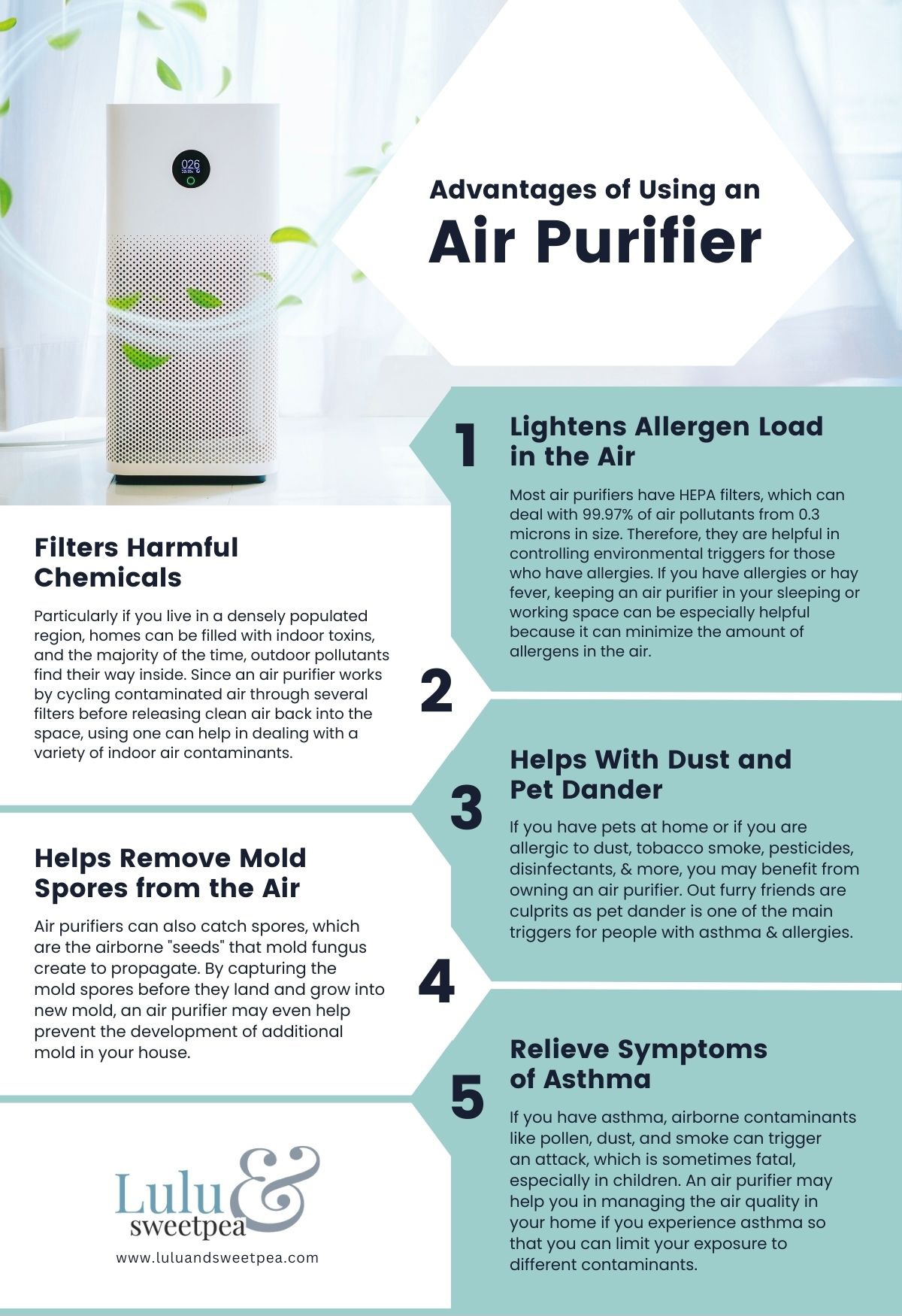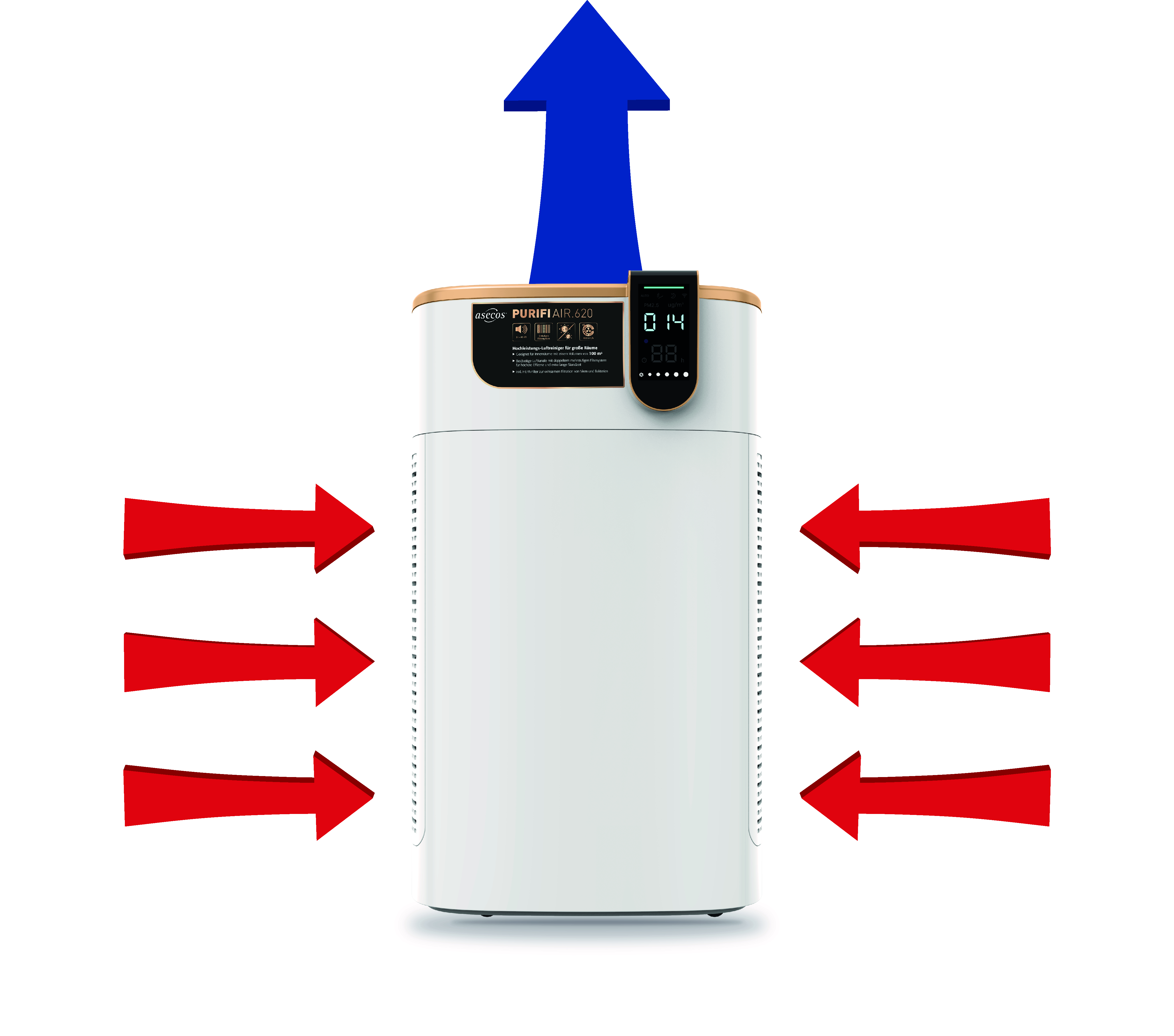Introduction
An air purifier is an essential device in every home owing to the increase in pollution worldwide. They help reduce contaminants from the air inside your home, including pollutants, odors, and smells.
The quality of air in the kitchen plays a n important role in your health and overall well-being since it is a shared space to spend time in while cooking, eating, and socializing. Poor indoor air quality can be detrimental to your health, leading to several health problems, lung conditions, and respiratory issues. Long-term exposure to harmful pollutants can also cause an increased risk of cancer.
To avoid such risks, an air purifier can work wonders in sucking pollutant-filled air and replacing it with clean, fresh air free from any odor. Fresh air can even impact food quality and texture, which is why many deem air purifiers as necessary kitchen devices.
To better protect yourself, it is best to know about common kitchen pollutants and the benefits of owning an air purifier for your kitchen. This information can help you decide on the right air purifier when you decide to purchase one.
When dealing with mold removal, it’s paramount to seek expert advice and solutions to ensure the safety and well-being of all inhabitants. Companies like A-1 Certified Environmental Services provide thorough indoor air quality testing, among other services, to identify any lingering mold spores and other contaminants that could potentially harm the occupants, ensuring a healthier living environment in areas like San Francisco.
Common Kitchen Pollutants
Kitchens are perhaps the most contaminated space in your home because of the appliances present. Cooking and working with fresh produce and meat can introduce several pollutants contributing to indoor air pollution. Here are some of the most common kitchen pollutants.
Carbon Monoxide
Carbon monoxide is a toxic gas produced in low quality by gas stoves. If left to build up, it can be harmful to your health as it replaces oxygen in your red blood cells, causing severe tissue damage. This is called carbon monoxide poisoning. Mild exposure to carbon monoxide can cause headaches, drowsiness, and disorientation.
Volatile Organic Compounds (VOCs)
VOCs are emitted by cookware, cooktops, and cleaning products used around the kitchen. These can be harmful when inhaled, thus, negatively affecting the indoor air quality. Exposure to VOCs can cause eye, nose, and throat irritation, headaches, and liver, kidney, and nervous system damage. Some VOCs are even suspected to be carcinogens.
Mold
Kitchens usually have damp and humid environments, which can be an ideal breeding ground for mold, causing allergic reactions and other respiratory problems. Mold can also cause allergy symptoms for those who are allergic to pollen.
Particulate Matter
Cooking produces fine particles that can easily be inhaled and cause respiratory problems. These can cause allergy-like reactions and lower inside air quality.
The Benefits of Air Purifiers in Kitchens
Air purifiers use advanced filtration technology that can help improve air quality and remove pollutants from their vicinity. Using air purifiers can help improve your health and quality of life. Here are some benefits of using air purifiers.
Air Purifiers Reduce Allergies
Exposure to allergens such as dust, pollen, and pet dander can trigger allergies, causing people to sneeze, cough, and get an itchy throat. Air purifiers are designed to keep the indoor air clean from such allergens as it sucks in contaminated air and passes it through filters, which remove them before pumping it out again. This makes air purifiers an essential item in kitchens, where pollutants typically gather due to the regular use of produce and meat in cooking.
Air Purifiers Help Fight Asthma and Other Respiratory Diseases.
Air purifiers can help remove allergy microbes typically known for causing allergies and asthma. Using HEPA filters, most air purifiers can eliminate more than 99.9% of allergens. Active carbon filters are also highly effective in reducing odor and microbes usually found in kitchens.
Air Purifiers Neutralize Smells and Odors
In kitchens, you are surrounded by all sorts of smells and odors from the food you are cooking or mold spores. Air purifiers are excellent at removing all kinds of smells using filters, leaving behind clean air. Charcoal filters are particularly useful for absorbing odor due to their high porosity.
Types of Air Purifiers for Kitchens
When purchasing an air purifier for your kitchen, you have many different options to choose from. HEPA, Activated carbon, and UV-C light filters are the most commonly types used in kitchen air purifiers.
HEPA Filter Air Purifiers
HEPA filter air purifiers are the most commonly used air purifiers in kitchens due to their ability to trap allergens, airborne particles, and contaminants. When air passes through these filters, smoke, dust, and pollen get trapped, and clean air is released. One of the main advantages of using HEPA filter air purifiers is their ability to trap pollutants smaller than 0.3 microns. However, smaller viruses and bacteria may pass through and remain in the indoor air.
Activated Carbon Air Purifier
Suppose you are in need of an air purifier to tackle kitchen smells. In that case, an activated carbon air purifier is the perfect pick. It works almost identically to HEPA filters, but the filter uses carbon, which has a high porosity. Therefore, it can absorb pollutants effectively. Activated carbon air purifiers have excellent absorption capacity and can easily remove gaseous pollutants like VOCs. However, they cost a lot in maintenance as the filter needs to be replaced frequently, usually every 3 to 6 months.
UV-C Light Air Purifiers
UV-C light air purifiers use short-wave UV-C light to destroy bacteria, viruses, germs, and other allergens. Instead of passing air through a filter, these air purifiers disinfect by passing air through a UV lamp in a process called Ultraviolet Germicidal Irradiation (UVGI). This effectively removes bacteria from the air and can be used in indoor spaces such as bedrooms and offices. However, these air purifiers are not very effective in kitchens, especially if you want to remove the odor, because they cannot remove VOCs and gasses.
Ionizer Air Purifiers
Ionizer air purifiers work differently from regular air purifiers because they emit negatively charged ions that combine with airborne particles. This makes them dense, causing them to fall to the ground. This method of particle eradication makes these purifiers perfect for removing viruses, mold, and bacteria from indoor air. Thus, they can make effective kitchen air purifiers. However, they cannot remove larger particles like dust. Additionally, if you are looking for a purifier to reduce kitchen odor, then this may not be the right fit for you.
Other Considerations for Air Purifiers in Kitchens
Other than the kind of air purifier, factors such as noise level, maintenance, filter costs, and energy efficiency should also be considered. These will help you make the best choice for your kitchen.
Noise Level and Placement of Air Purifiers
All air purifiers make a little noise due to the internal fan that sucks in the air and runs it through the filters. Air purifier volumes range from 23 to 24 decibels on quieter models. Still, some can be loud and run at 65 to 70 decibels. If you prefer to have your air purifier relatively quiet, purchase one that does not make a lot of sound and stays within a 30=50 decibels range.
When choosing where to place your air purifier, select a location that does not have any obstruction around it. It’s a good idea to place it near the center, backed up against the wall. In a kitchen, it is best to put it near the stove, where the most smell comes from.
Maintenance and Filter Replacement Costs
The kind of maintenance your air purifier needs depends greatly on the frequency of use, its placement, and the type you purchase. Suppose you plan to put your air purifier in the kitchen. In that case, it will constantly filter the air to eliminate odor and VOC. Additionally, some kinds of purifiers, such as those with carbon filters, need to be replaced very frequently, which can increase filter replacement costs.
Efficiency of Air Purifiers
AHC, or “air changes per hour,” is the standard metric used to measure the efficiency of air purifiers. This metric represents the frequency at which the device can recirculate polluted air within a given area. It is recommended to select an air purifier with an AHC of 3-5 for optimal results.
Conclusion
An air purifier is a valuable addition to your kitchen, as it helps improve indoor air quality and reduces exposure to harmful pollutants, such as carbon monoxide, volatile organic compounds, mold, and particulate matter, which can lead to various health conditions. Air purifiers have many benefits, and ultimately, with the right air purifier, your kitchen can become a healthier and more pleasant space to spend time in. When choosing one, consider your individual needs and circumstances alongside noise level, maintenance costs and frequency, and energy efficiency in addition to the basic factors such as type and cost.



